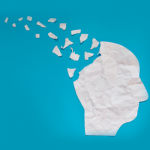Following a meniscal tear, the chance of OA jumps dramatically, with over 50% of people suffering symptoms and having X-ray evidence in 10 to 20 years. Unfortunately, many people with a meniscal tear will damage other joint structures at the same time. Experiments in animal models indicate dramatically the likelihood that these injuries will lead to arthritis because the standard models for OA involve the severing of an anterior cruciate ligament or removal of a meniscus from the knee of a rabbit or dog. Like clockwork, arthritis develops in the operated animals.
If the studies are to be believed, the increase in the frequency of arthritis from sports—especially among female athletes—will dwarf that attributable to the aging of the population. Indeed, sports have created a new entity—old knees in young people—as sports participation has transformed a problem of baby boomers into one of babies. For many people, OA starts with injury when they are young—on the field or behind the driving wheel. Injury is the real culprit in a process that may take 10, 20, or 30 years to culminate in a joint in which cartilage is eroded and tattered and pain accompanies every step. Once a joint is injured in a sport, the clock starts ticking on the time bomb called arthritis.
Once I attended the Blue–White scrimmage of the Duke football team during spring practice. Wallace Wade Stadium in Durham is usually not very full during the season, even when the contest is with the Tar Heels from down Tobacco Road, now called Highway 15-501. On a warm April day, the sky glistening Carolina blue, the stadium was virtually empty, allowing every sound to be appreciated in a way not possible when screaming fans attempt to discombobulate the opposing team with a sonic assault. The noises of collision at the scrimmage were crashing and visceral, making apparent the forces generated. What I remember most were the grunts and groans of pain during the charge of the lineman and the tackles of the backs. The sounds of pain were louder and more intense than any I have encountered in medical practice, whether from a patient with a kidney stone, dissecting aneurysm, or myocardial infarction.
I would assume that a torturer in a prison would relish such clamor but, for a physician, it was a shock, knowing how much pain accompanies the game. To me, every grunt or groan represents a potential injury that in a few years could cause a joint to degenerate or throb with pain with terrible life-long consequences.

